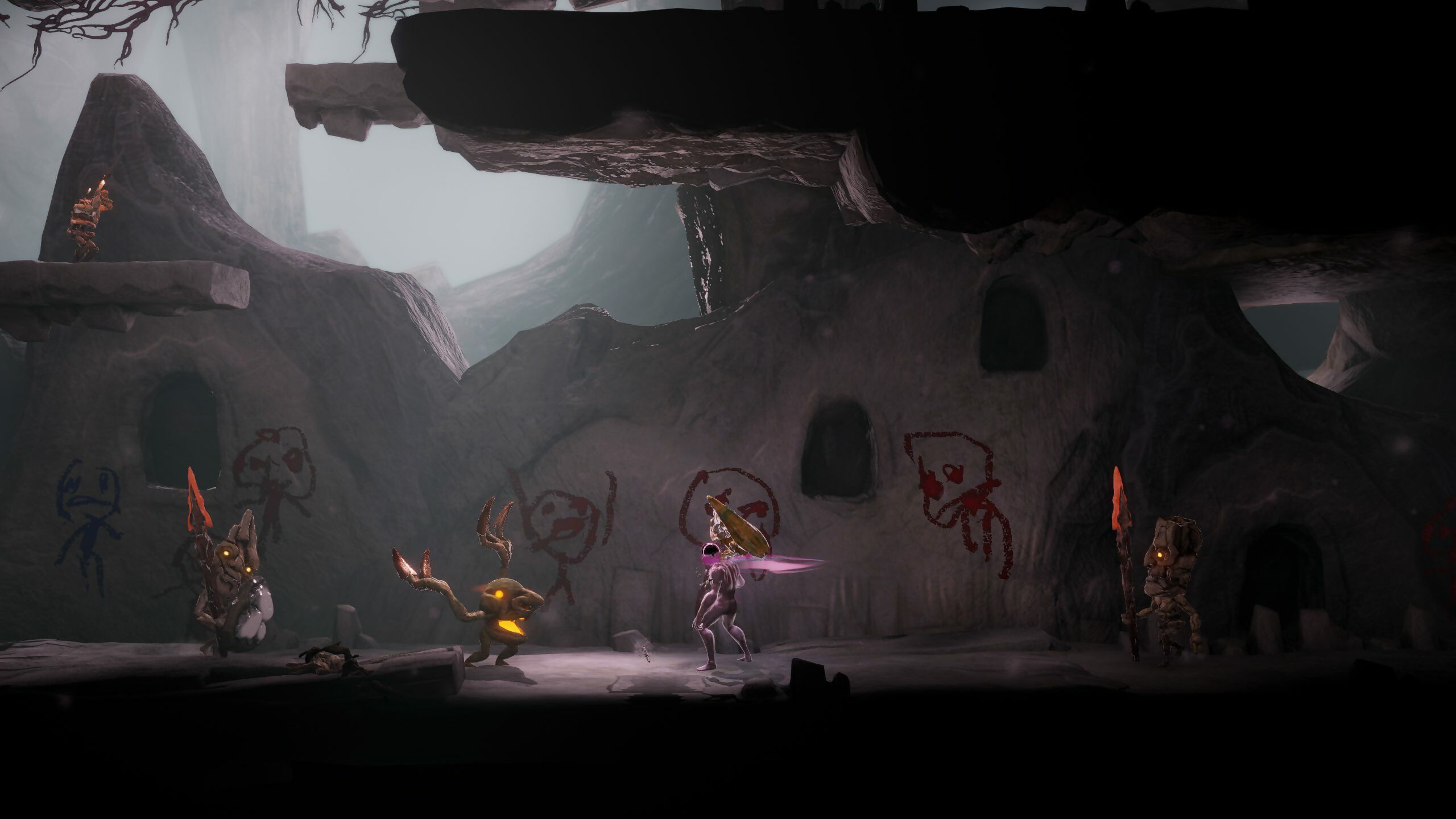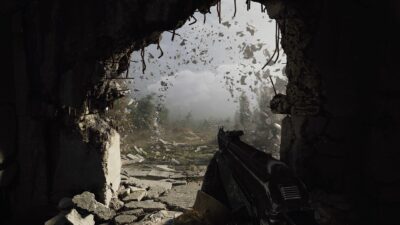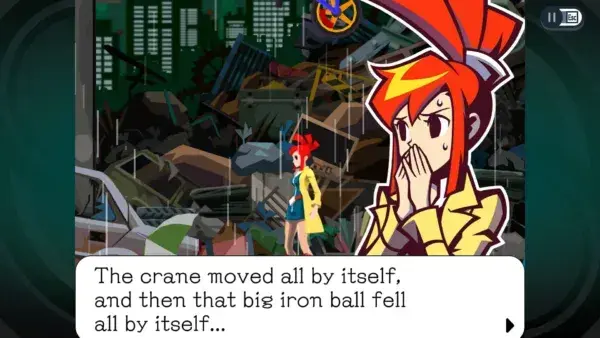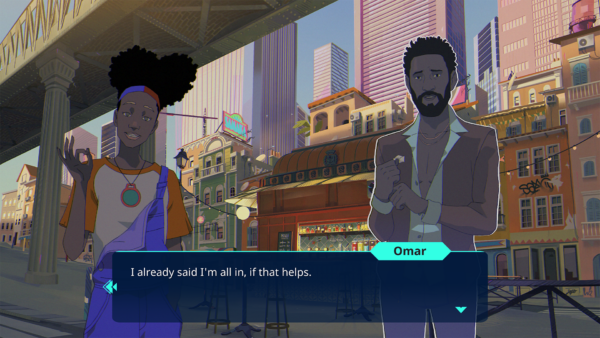
Ideas can come from all kinds of familiar places, but still combine to create something different and unexpected. GRIME is a tidy example: it’s the work of five self-described “Dark Souls enthusiasts and Hollow Knight fanboys” from Israel, takes elements from such games as Bloodborne, Sekiro: Shadows Die Twice, and Salt and Sanctuary, and yet looks very little like the titles that inspired it.
In essence, GRIME is a side-scrolling hybrid of RPG and Metroidvania, a bit like Hollow Knight, but with a detailed combat system that allows you to absorb your enemies’ abilities and adopt them as your own. Also: the central character is a deathly looking humanoid with a swirling vortex in place of a head, and the levels you roam are surreal hellscapes populated by various ghoulish and twisted creatures.
“I’ve always been a huge fan of strange and surreal designs,” says GRIME director Yarden Weissbrot. “The very first designs I did were of the Rockhead [enemies] and face-shaped rocks in the desert, followed by an enemy with a giant hand as a torso. At first, I drew these for no other reason than I find those kinds of designs cool. The world and story were non-existent at that point; all I knew was that it was likely going to be a world with an attachment to distorted human shapes since that’s what I like drawing.”
GRIME is the debut game from Clover Bite, a team of former students who got together at Israel’s Tiltan School of Design and Visual Communications. Not long after the project began, the basic side-scrolling combat was in place (“Salt and Sanctuary was our main reference for the core combat and movement mechanics,” Weissbrot says), but there was a certain nervousness about pushing the game’s scope too far. “Relatively early into development, and after playing a [lot] of Bloodborne, I became really fond of the parry mechanic used to spice up the Souls combat,” Weissbrot tells us.
“But, since this was our first game and I had the added responsibility of directing the project, I was terrified of deviating from the established formula. To be blunt, I just didn’t think we’d have the ability to pull it off and create something entirely our own from a gameplay perspective – especially with me at the helm and with basically zero game-making experience. I didn’t want to risk the game and everyone’s faith in it by chasing a mechanic I just recently grew to like on a whim.”

The game’s built in Unity, along with tools “we made ourselves as we needed them, such as a level streaming system, enemy AI management, and so on,” Weissbrot says.
All of that changed, however, when another game by FromSoftware emerged – Sekiro: Shadows Die Twice. Says Weissbrot: “The Sekiro announcement trailer came out, and I became obsessed with analysing it and figuring out how parrying works in it. I realise this may be pretty silly, but it honestly felt in a way like I have permission to make the parry as a central mechanic for the game now that FromSoftware did just that. After focusing my attention on designing what I thought would be a unique and cool look for a parry, I landed on using a black hole to sort of catch enemy attacks with and then pull them in.”
The influence of FromSoftware’s action output runs deep in GRIME, then, from the combat to the Trait system, which is where those purloined abilities can be upgraded up to five times. “In order to level up traits, you need to get Hunt points, which are typically dropped from challenging enemies that don’t respawn on defeat,” Weissbrot explains. “The idea was to have the player want to hunt down enemies, both weak and strong, for the challenge and for their added power, like the predator they are.”
One area where GRIME will diverge from the Souls games and Hollow Knight, however, is its difficulty – it’s an aggressive, violent game, sure, but it won’t completely beat you down from the outset. “I think GRIME overall will be a lot less punishing than both, since dying in the game doesn’t drop all of your currency,” says Weissbrot. “The goal with removing that penalty was to encourage players to play recklessly and aggressively, or allow them to take different routes whenever a certain one is too hard, rather than forcing them to travel back to where they died, in order to return what could be an hour or more of hoarded progress.”

Combat’s a big focus in GRIME, but also expect plenty of platforming segments, as well as areas laced with deadly traps to negotiate.
Behind the scenes, development has thrown up some Souls-like challenges of its own. “As I’ve mentioned, this was our first game,” says Weissbrot. “In many ways, everyone ended up wanting to be in charge and doing something different with GRIME’s gameplay. This hadn’t immediately changed after I’d been chosen to lead the project, as everyone still had little reason to trust my judgment when I, like them, had no experience either… It was a difficult period, filled with self-doubt.
“I had to trust that I was making the right decisions to keep everything from losing focus and going in different directions. We’ve had a lot of clashes, and [I feel] bad about rejecting ideas I didn’t think fitted. I’m not a total saint… but eventually, we [understood] each other’s faults and merits. I like to think we’ve all grown as people. These days, we joke about these kinds of things openly.”
GRIME’s development is on the home stretch now, and it looks remarkably polished for a small team’s debut. Due out later in 2021, it could prove to be one of the year’s most darkly enjoyable Metroidvanias.
Genre: Metroidvania
Format: PC
Developer: Clover Bite
Publisher: Akupara Games
Release: TBC 2021
Social: @Play_GRIME





